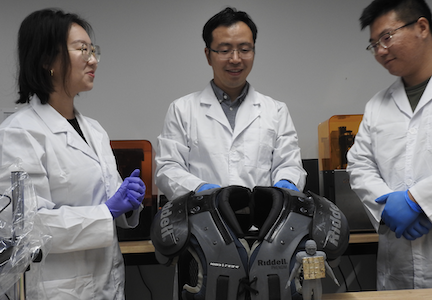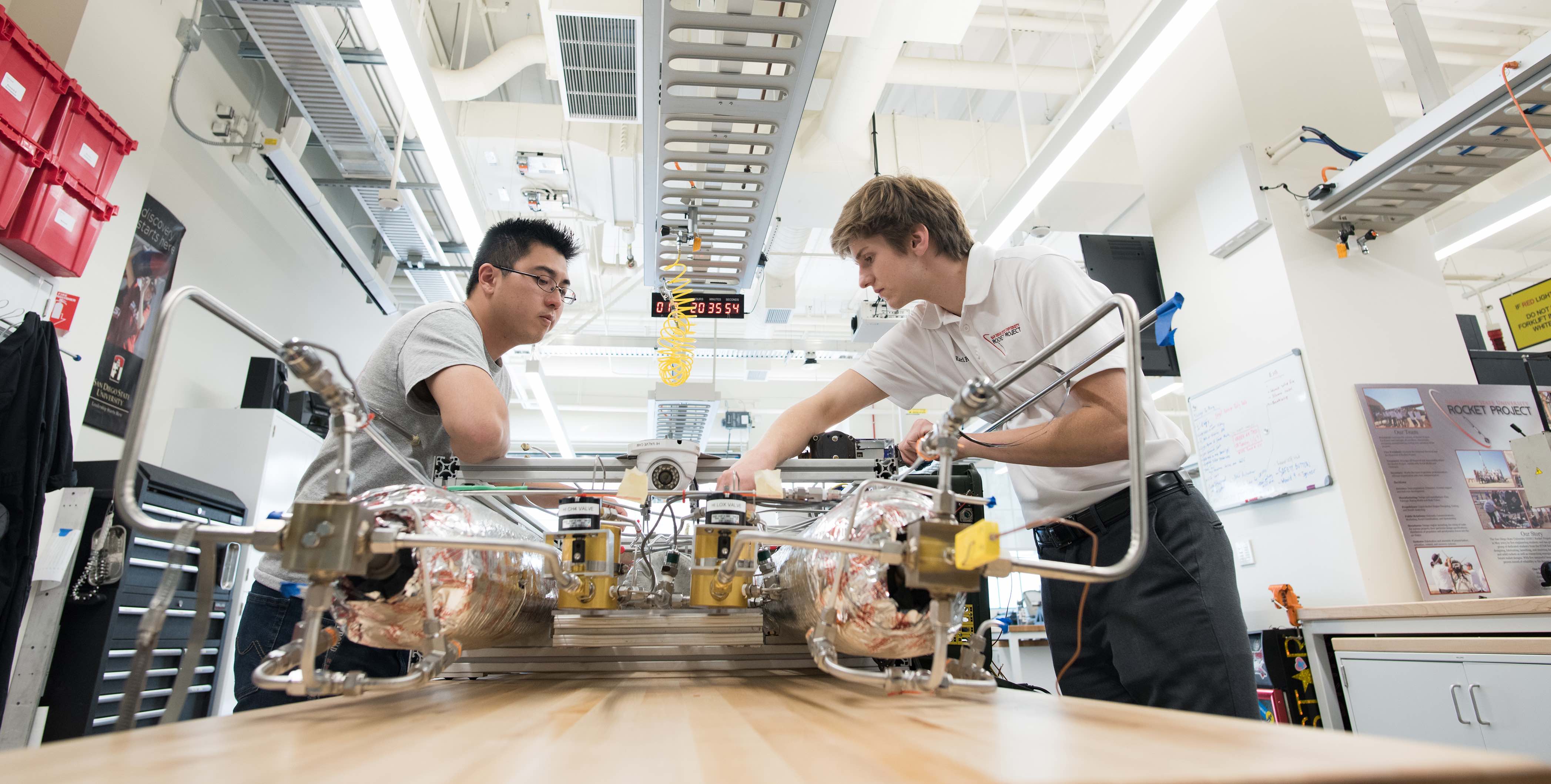Engineering a smart and robust protective body armor

What if there was a way to strengthen our understanding of the impact football players undergo? Or, to create elderly protective gear that alerts help upon a fall? What if we could produce a smart spacesuit material that monitors force and shields astronauts?
San Diego State University engineers are creating an advanced sensing technology with a lightweight, organic material (cuttlefish bone) to 3D print and advance body protection gear with alarm systems and data collection capabilities built in.
In an October 2023 Nature Communications publication, a team led by mechanical engineering professors Yang Yang and Wenwu Xu outlined how their material can advance outdated body protection used in such industries as sports, military, medicine, and aerospace.
Innovation inspired by the sea
Durable. Lightweight. Versatile. Sustainable. These are the words used to describe the cuttlefish bone.
Some cuttlefish species live as deep as 2,000 feet under the ocean. In order to withstand the high water pressure, they exhibit a uniquely stiff and chambered wall-septa microstructure that absorbs energy in their high stress environments.
This was a key point of inspiration for the engineers, as they became fascinated by its functional structure.
“Inside the cuttlebone is lightweight and strong, and this is exactly what we want for the design of the wearable devices,” said Yang. “When thinking about manufacturing aerospace engineering and military devices, we need materials like this, so we became inspired by the complex structure of this bone.”
In trying to replicate this, the engineers produce a new composite by growing piezoelectric (an electric charge that results from pressure and latent heat) Rochelle salt crystals in 3D structures that mimic the foundation of cuttlebone. The crystals combined with cuttlebone creates a uniquely sensitive and durable material.
Engineering Dean Eugene Olevsky and Ph.D. students Qingqing He and Runjian Jiang contributed to the research.
“This 3D-printed composite materials with a biomimetic structure inherits the lightness and strength of the matrix, and also gains sensing capabilities through the grown piezoelectric salts. This is generally not available in brittle, structural ceramics,” said Jiang.
This combination allows for built-in smart monitoring sensors that can alert help upon impact and collect data.
For example, Yang and Qingqing are working to develop a curved knee pad for elderly patients at risk of falling. If someone experiences a fall, not only will help be notified automatically, but the material will also report data on the details of their fall.
“We are working on the alarm by connecting a wireless device that can generate an alert on a senior's loved one’s phone,” said Yang.
In addition to improved mechanical performance of the body armor, both the material and the manufacturing process, is significantly more sustainable than what’s currently on the market.
For instance, protection would be almost impossible to fabricate traditionally due to the complexity of the material. 3D printing, however, not only allows for more customization of the size and fit of the product, but also saves time and energy.
The reversibility of the process allows engineers to repair potential cracks in the armor by applying liquid droplets of the composite and letting it dry for six to 12 hours.
As a result, the protective gear is long-lasting, recyclable, and produces virtually zero waste. This solution is not possible with traditional ceramics.
“When traditional ceramics break, it’s impossible to heal them in this way, creating a lot of waste. Our method, on the other hand, is reusable. The manufacturing process uses much less energy, and the overall price of the product is lower,” said Yang.
Looking forward, the researchers are also collaborating with 3D Systems, a company associated with the NFL, to look at the use of their material for the creation of helmets with advanced energy absorption and impact analysis to advance our understanding of head and brain impact.
“We are able to design a specific helmet for each player that will fit their body better, allowing for more flexibility and improved performance,” said Yang.
Yang and his team plan to take their football gear to the next level this year by securing a patent and working toward commercialization.
“The conducted study provides a solid basis for the development of the whole next-generation smart monitoring electronics in sports, military, aerospace, and biomedical engineering,” said Olevsky.

